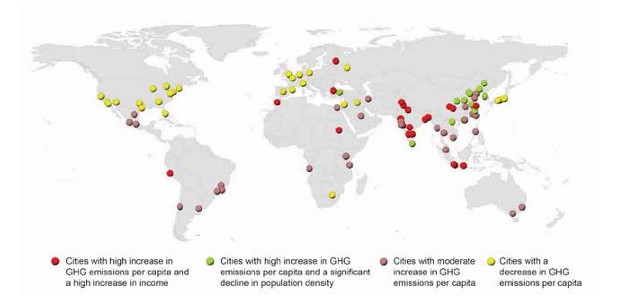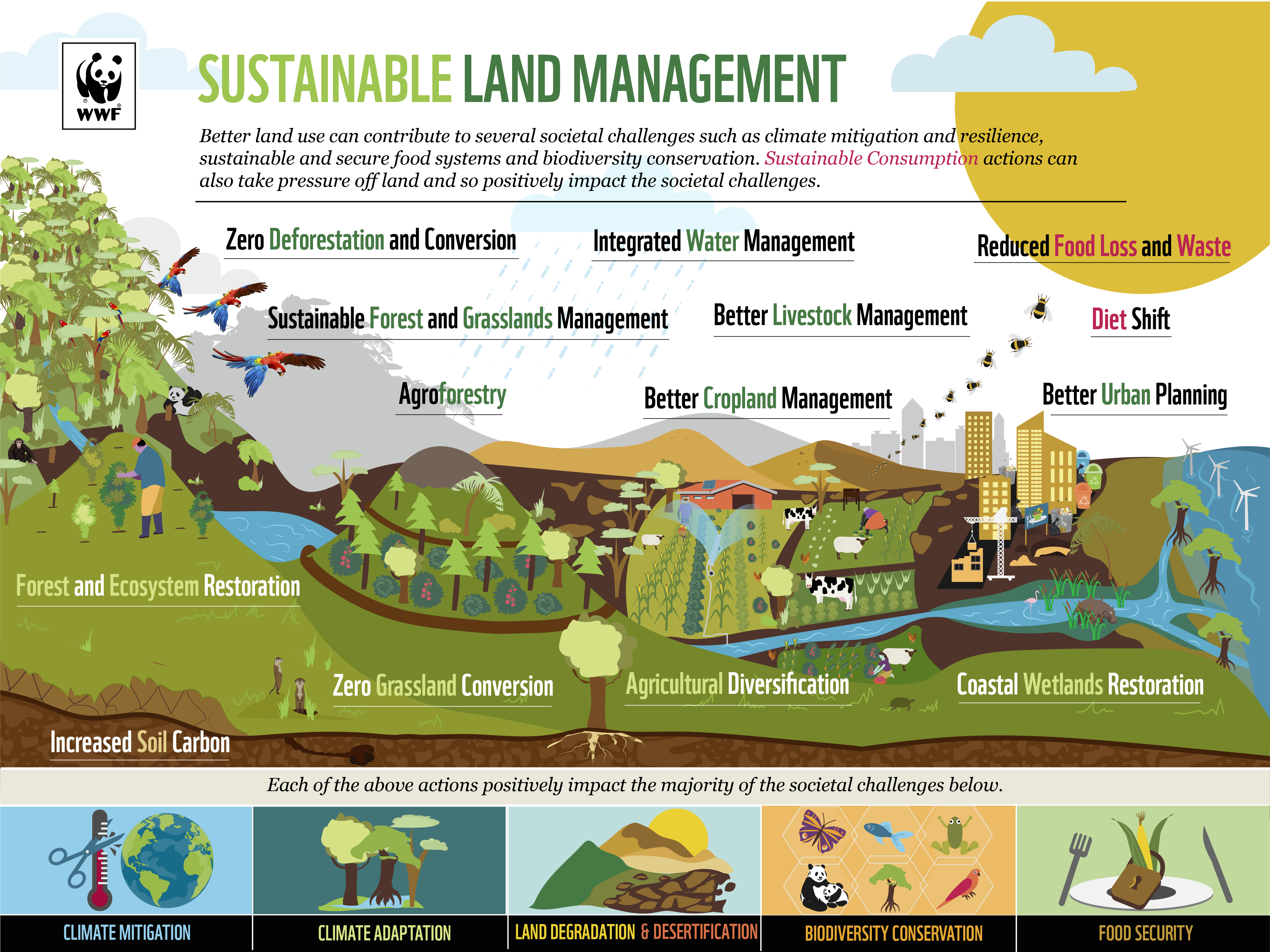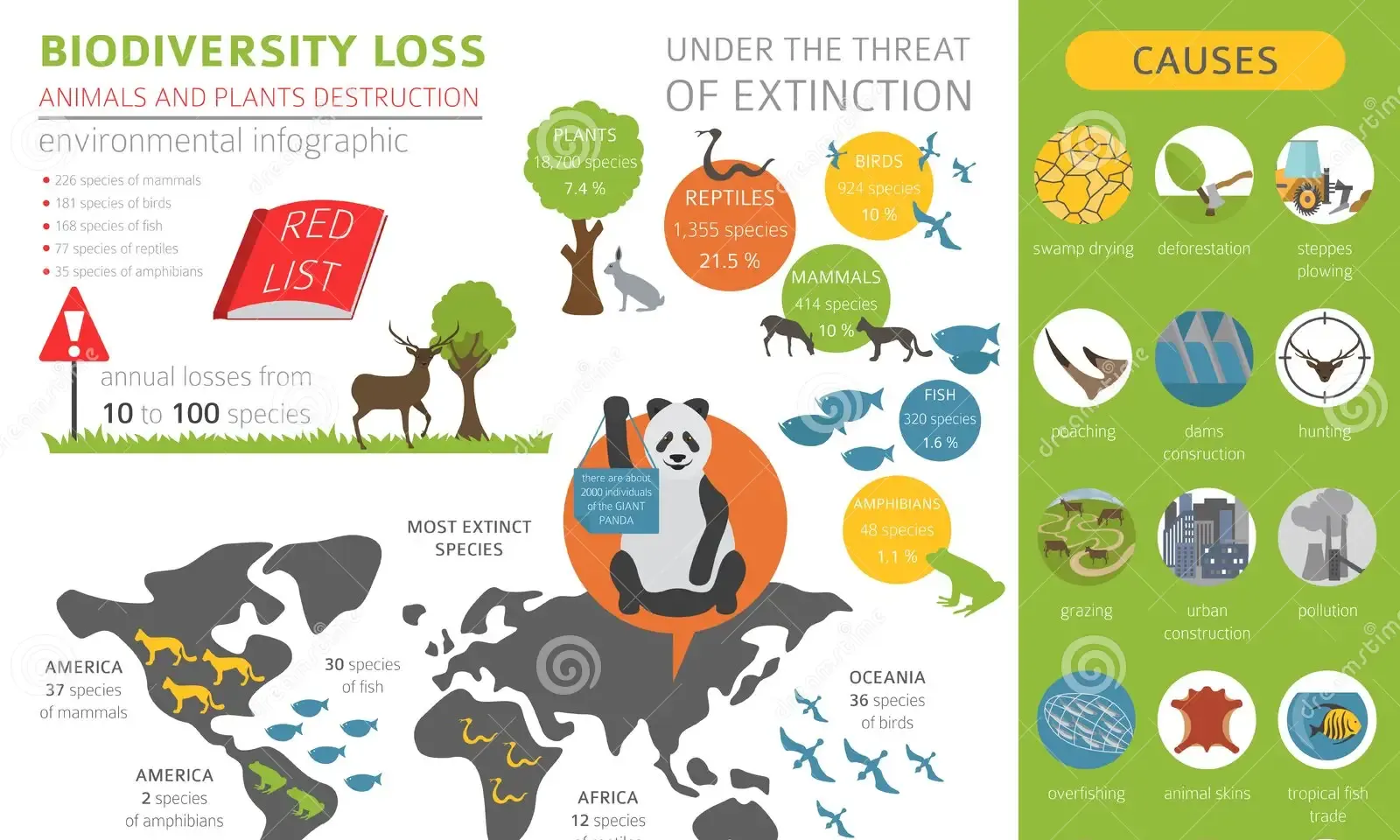Family, Resources, and Biodiversity - What Mega Cities Sacrifice
28 December 2024 -
11 mins read time
Tags:
Observer
Blog
Future
Introduction

Credits: World Cities Report 2024: Cities and Climate Action Source
1. Family and Community: Lost in the Concrete Jungle

Credits: Dall E 2024 (AI Generated): Family ties severed
2. Resource Diversification: The Overlooked Pillar of Sustainability
“We have mortgaged the future, in exchange for short-term gains.”
— Bill McKibben, Deep Economy (paraphrased)
Credits: IPCC Land Report - Climate Change and Land Source
3. Environmental Limits and the Biodiversity Reckoning
“Each time a species goes extinct, we lose part of our world’s story—one that may never be told again.”
—Elizabeth Kolbert, The Sixth Extinction (paraphrased)
Credits: DreamsTime Source
Conclusion
Key Takeaways
- Healthy Urban Communities: Prioritize neighborhood-level designs and policies that keep families close.
- Sustainable Resource Management: Adopt diversified approaches for food, energy, and infrastructure to avoid single points of failure.
- Protect Biodiversity: Ensure a balanced approach to urban development and ecological preservation across all states to safeguard the planet’s vital life-support systems.
Author Comments
What we have observed unfolding in America is no longer limited to its borders. Developing nations such as India—whose democratic values mirror those of the United States—are now navigating similar patterns of rapid urbanization, familial disconnection, and resource strain. As an author keenly observing these shifts in India, it is evident that this convergence of challenges calls for transformative action. Our shared democratic ideals demand a coordinated response: one that prioritizes sustainable development, reaffirms the importance of family and community ties, and actively safeguards natural resources for future generations.
— Narendhiran SaravananeGet Involved!
- Spread the Word: If you found this post helpful, consider sharing it on social media to spark broader conversations about urban sustainability. Tweet This
- Stay Informed: Follow local and global organizations that advocate for ecological conservation, urban planning, and family welfare. Follow Me on Twitter
- Share Your Views: Your ideas, insights, or even a simple reaction can make a difference. Join the conversation and contribute to shaping research that paves the way for a sustainable and harmonious future for humanity. Together, let’s create change!
Should governments prioritize diversified development or focus on enhancing megacities?
- Equitable and diversified development across the country
- Improve only Urban Infrastructure/ Mega cities
- Both
References
- [1] United Nations, Department of Economic and Social Affairs. (2018). World Urbanization Prospects: The 2018 Revision. Link.
- [2] United Nations Environment Programme (UNEP). (2021). Cities and Pollution: The Problem and Solutions. Link.
- [3] Jacobs, J. (1961). The Death and Life of Great American Cities. Random House.
- [4] Florida, R. (2002). The Rise of the Creative Class. Basic Books.
- [5] Putnam, R. D. (2000). Bowling Alone: The Collapse and Revival of American Community. Simon & Schuster.
- [6] International Organization for Migration (IOM). (2020). World Migration Report 2020. Link.
- [7] Wirth, L. (1938). Urbanism as a Way of Life. American Journal of Sociology, 44(1), 1–24.
- [8] World Health Organization. (2017). Depression and Other Common Mental Disorders: Global Health Estimates. WHO Press.
- [9] Twenge, J. M., Campbell, W. K., & Carter, N. T. (2014). Declines in Trust, 1972–2012. Psychological Science, 25(10), 1914–1923.
- [10] Laslett, P. (1977). Family Life and Illicit Love in Earlier Generations. Cambridge University Press.
- [11] Putney, N. M., & Bengtson, V. L. (2003). Families, intergenerational relationships, and kinkeeping in midlife. In S. L. Willis & M. S. Reid (Eds.), Life in the Middle (pp. 221–241). Academic Press.
- [12] Klinenberg, E. (2018). Palaces for the People: How Social Infrastructure Can Help Fight Inequality, Polarization, and the Decline of Civic Life. Crown Publishing Group.
- [13] Gehl, J. (2010). Cities for People. Island Press.
- [14] McKibben, B. (2007). Deep Economy: The Wealth of Communities and the Durable Future. Times Books.
- [15] Homer-Dixon, T. (2006). The Upside of Down: Catastrophe, Creativity, and the Renewal of Civilization. Island Press.
- [16] UN-Habitat. (2022). World Cities Report 2022. Link.
- [17] International Renewable Energy Agency (IRENA). (2020). Global Renewables Outlook: Energy Transformation 2050. Link.
- [18] World Bank. (2021). Urban Development Overview. Link.
- [19] Jacobs, J. (1961). The Death and Life of Great American Cities. Random House.
- [20] Speck, J. (2012). Walkable City: How Downtown Can Save America, One Step at a Time. Farrar, Straus and Giroux.
- [21] IPCC. (2022). Climate Change 2022: Mitigation of Climate Change. Link.
- [22] Convention on Biological Diversity (CBD). (2020). Global Biodiversity Outlook 5. Link.
- [23] Brondizio, E. S., Settele, J., Díaz, S., & Ngo, H. T. (Eds.). (2019). Global Assessment Report on Biodiversity and Ecosystem Services. IPBES.
- [24] Kolbert, E. (2014). The Sixth Extinction: An Unnatural History. Henry Holt and Company.
- [25] Rockström, J., et al. (2009). Planetary Boundaries: Exploring the Safe Operating Space for Humanity. Ecology and Society, 14(2), 32.
- [26] Beatley, T. (2011). Biophilic Cities: Integrating Nature into Urban Design and Planning. Island Press.
- [27] Newbold, T., et al. (2016). Has land use pushed terrestrial biodiversity beyond the planetary boundary? Science, 353(6296), 288–291.
- [28] Foley, J. A., et al. (2005). Global consequences of land use. Science, 309(5734), 570–574.
- [29] Benedict, M. A., & McMahon, E. T. (2012). Green Infrastructure: Linking Landscapes and Communities. Island Press.
- [30] Elmqvist, T., et al. (2013). Urbanization, Biodiversity and Ecosystem Services: Challenges and Opportunities. Springer.
“Cities have the capability of providing something for everybody, only because, and only when, they are created by everybody.”
— Jane Jacobs, The Death and Life of Great American Cities